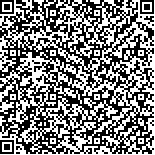| 本文已被:浏览 735次 下载 322次 |

码上扫一扫! |
| 香蕉细菌性软腐病菌生物被膜形成特性 |
|
黄宁1, 张景欣2, 蒲小明2, 沈会芳2, 杨祁云2, 王忠文1, 林壁润1,2
|
|
|
| (1.广西大学 农学院, 南宁 530004;2.广东省农业科学院 植物保护研究所, 广州 510640) |
|
| 摘要: |
| 为分析不同环境条件对香蕉细菌性软腐病菌(Dickeya zeae MS1)生物被膜形成的影响,采用结晶紫染色法测试不同离体培养条件下香蕉细菌性软腐病菌生物被膜形成情况。结果表明:香蕉细菌性软腐病菌在牛肉膏蛋白胨培养基(YPB)中形成能力最强;添加1%蛋白胨之后,生物被膜形成的生物量最大,随着浓度添加到4%,生物量降低;在提供大量营养的培养体系(198 μL YPB+2 μL菌液)中,细菌形成的生物被膜显著高于其他培养体系;培养24 h时,细菌生物被膜量最大,之后随着培养时间延长而减少;指数生长期细菌生物被膜形成能力优于平台期细菌;在初始菌密度102~108 CFU/mL范围内,不同密度对24 h生物被膜形成量无显著差异;32℃时,细菌生物被膜量显著高于其余温度试验组;pH 6~8时,细菌生物被膜量显著高于其他pH试验组。因此,香蕉细菌性软腐病菌能形成稳固而清晰的生物被膜,其生物被膜的形成能力与环境条件密切相关。 |
| 关键词: 软腐病 香蕉细菌性软腐病菌 生物被膜 环境因子 |
| DOI:10.11841/j.issn.1007-4333.2019.05.10 |
| 投稿时间:2018-09-08 |
| 基金项目:广东省自然科学基金项目(2015A030312002);广东省科技计划项目(2016B020202003);广州市科技创新项目(2014J4500034) |
|
| Biofilm formation characteristics of Dickeya zeae MS1 |
|
HUANG Ning1, ZHANG Jingxin2, PU Xiaoming2, SHEN Huifang2, YANG Qiyun2, WANG Zhongwen1, LIN Birun1,2
|
| (1.College of Agriculture, Guangxi University, Nanning 530004, China;2.Institute of Plant Protection, Guangdong Academy of Agricultural Sciences, Guangzhou 510640, China) |
| Abstract: |
| In order to analyze the effects of different environmental conditions on the biofilm formation of Dickeya zeae MS1,crystal violet assay was used to evaluate the biofilm formation.The results showed that:The ability of D.zeae MS1 to form biofilm was strongest in yeast extract peptone broth (YPB);The biofilm biomass reached peak after supplied with 1% peptone and then decreased with 1%-4% peptone addition;The A600 of the D.zeae MS1 biofilm was significantly higher in large amount of nutrient culture system (198 μL YPB + 2 μL of suspension) than that of other culture system.A600 of D.zeae MS1 biofilm was highest in 24 h,and then decreased with incubation time.The ability of exponential bacteria cells on biofilm formation was stronger than plateau bacteria cells.Within 102-108 CFU/mL,the initial bacterial concentration of D.zeae MS1 exhibited no significantly effect on biofilm formation.The A600 values of D.zeae MS1 biofilm increased with the incubation temperatures of 17-32℃ and peaked in 32℃.The remarkably higher A600 values of D. zeae MS1 biofilm was pH 6-8.In conclusion,D.zeae MS1 was able to form stable biofilm under different environmental conditions. |
| Key words: soft rot disease Dickeya zeae biofilm environmental factors |